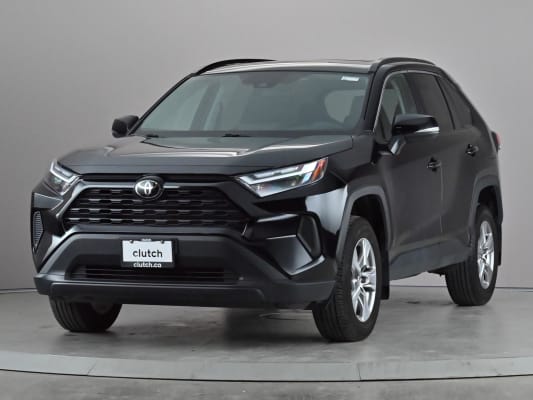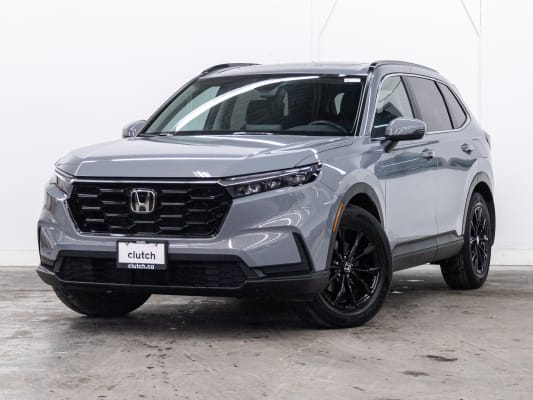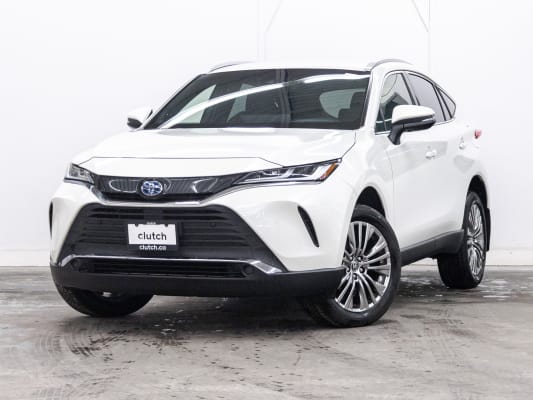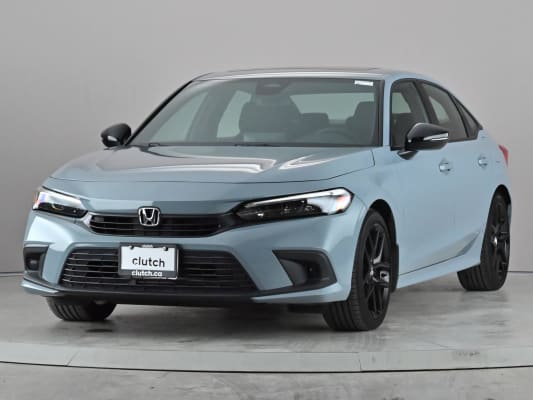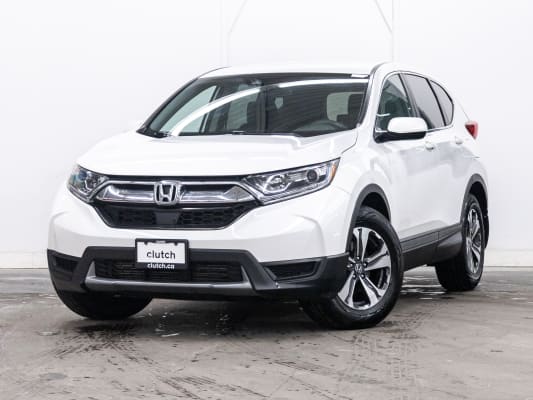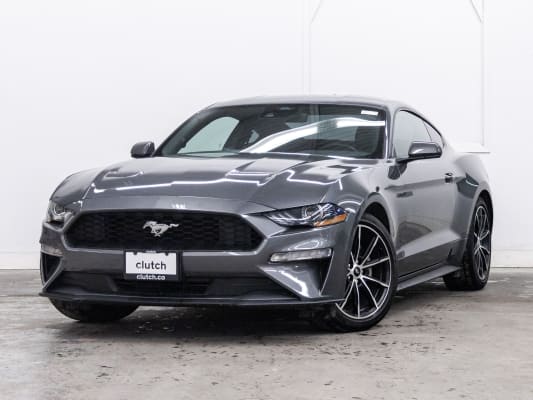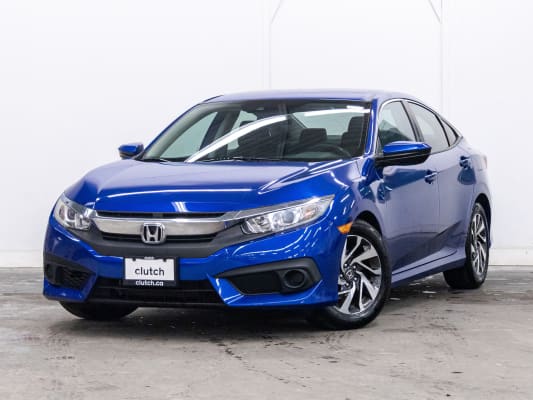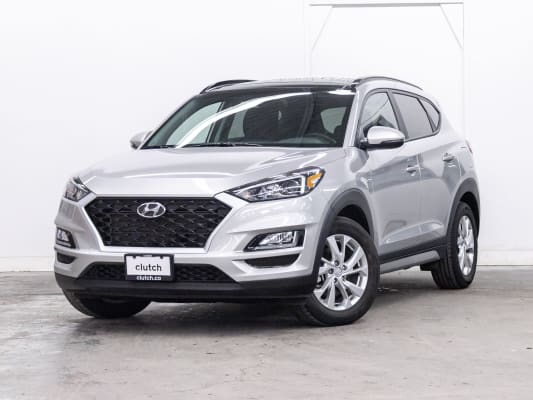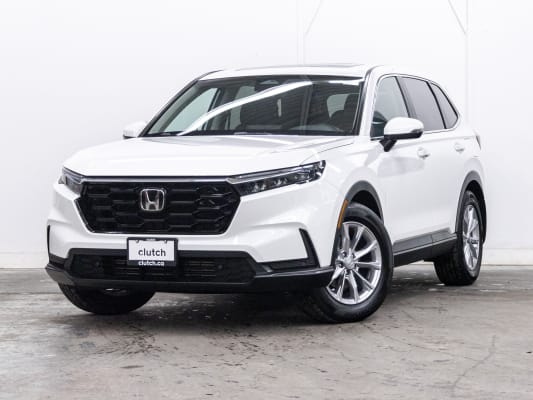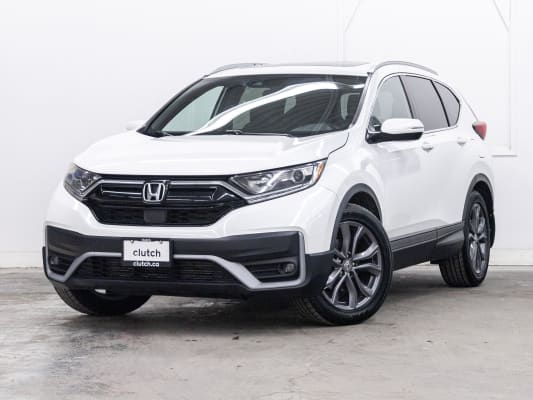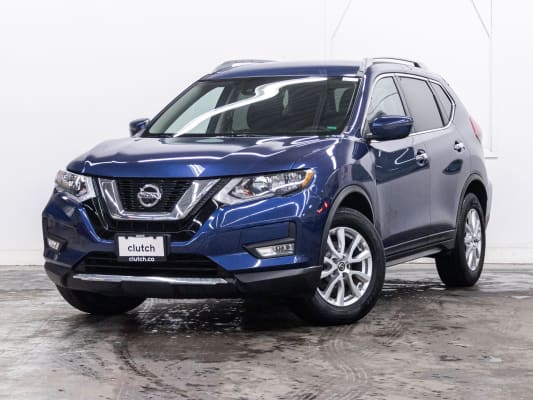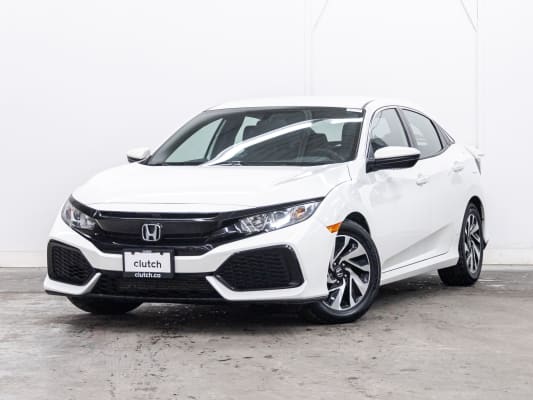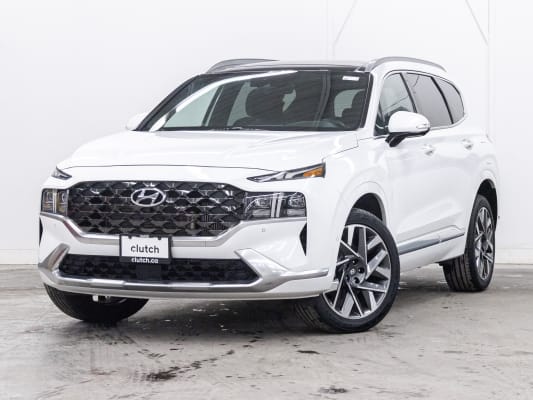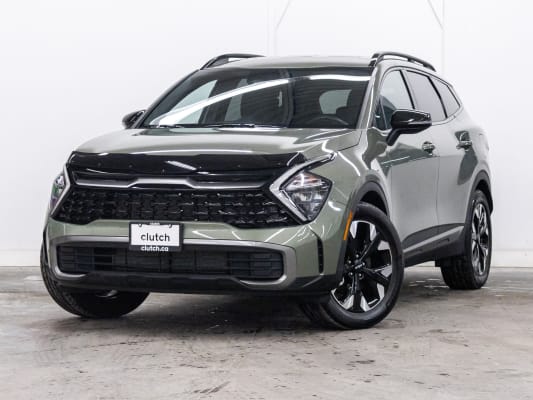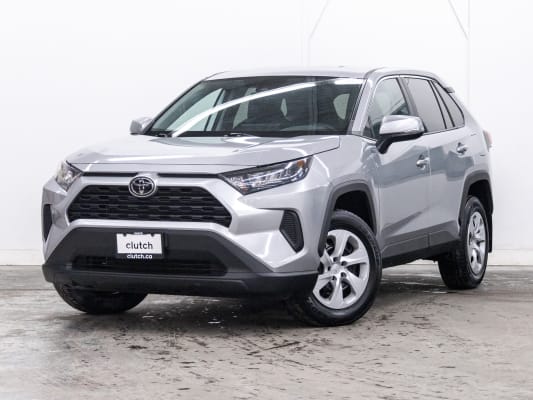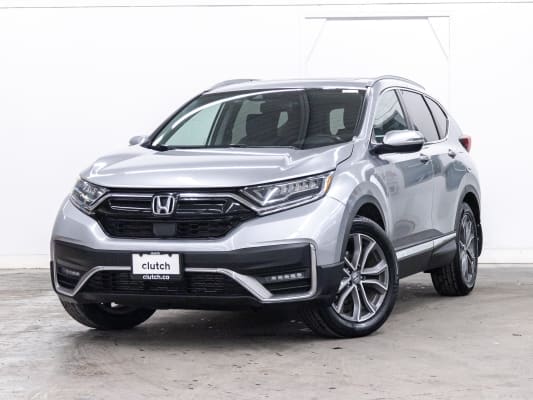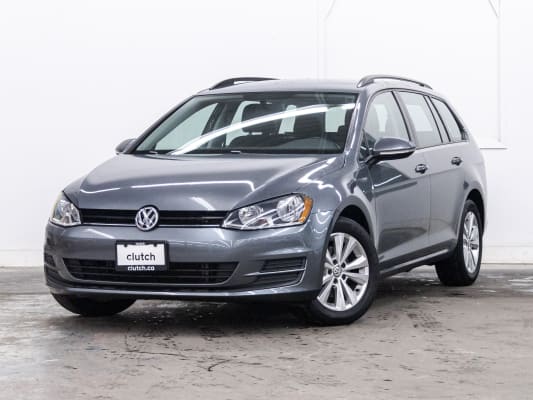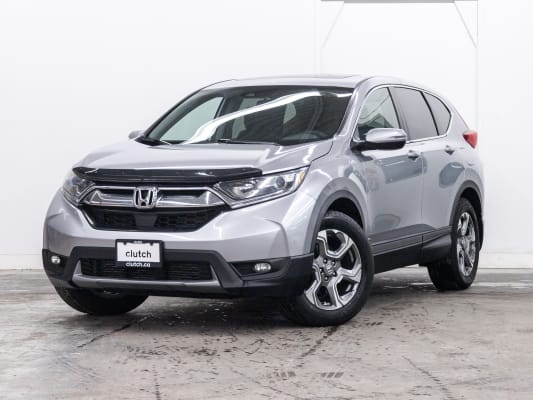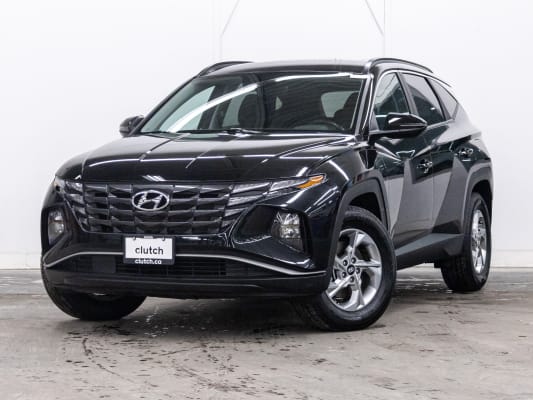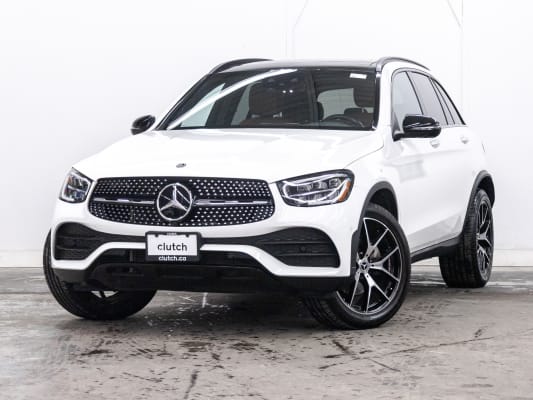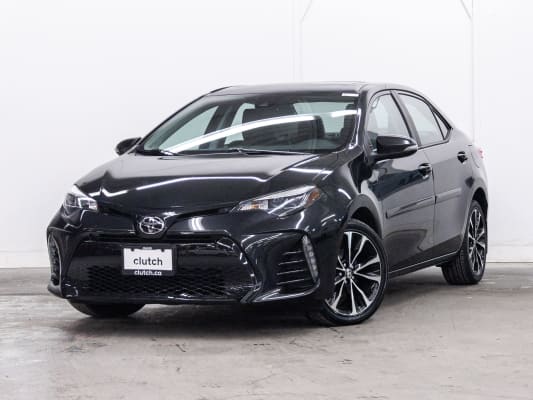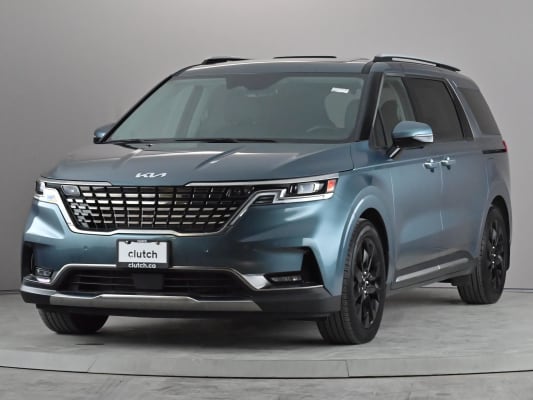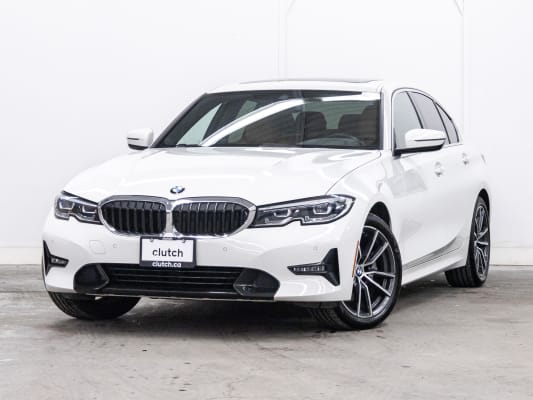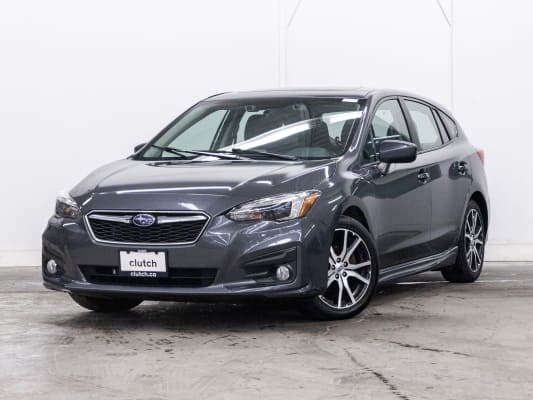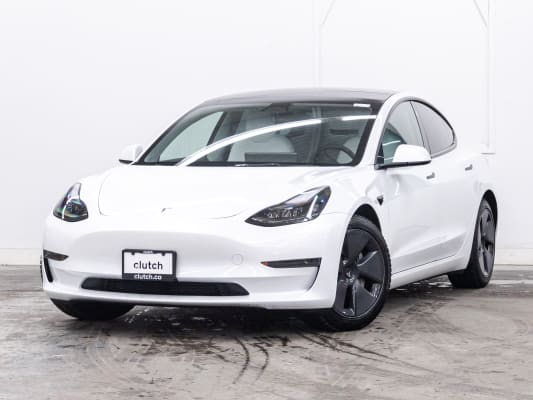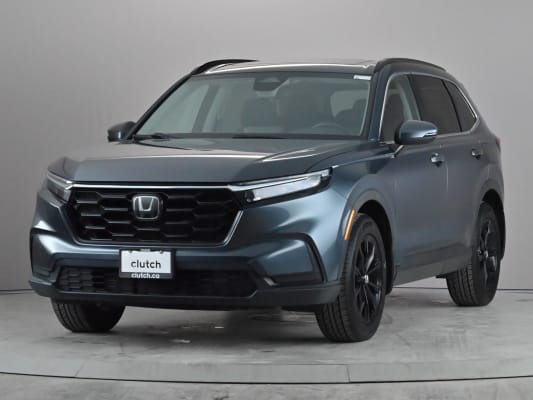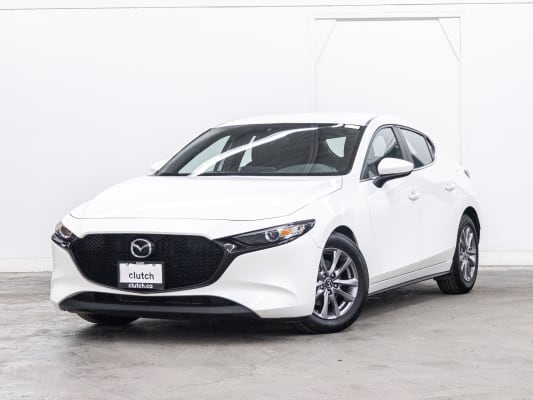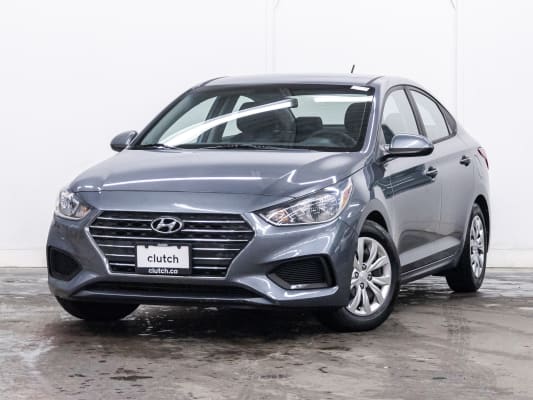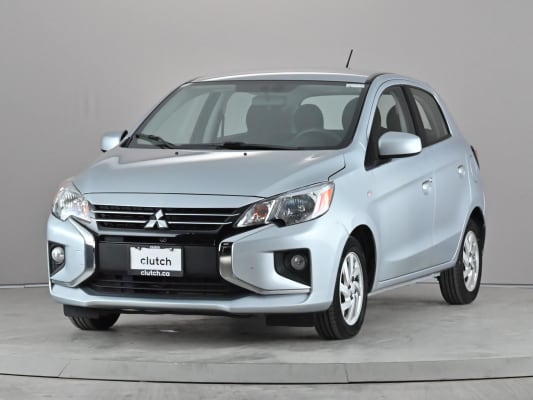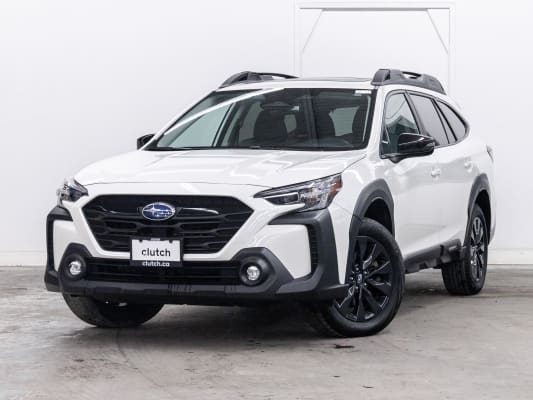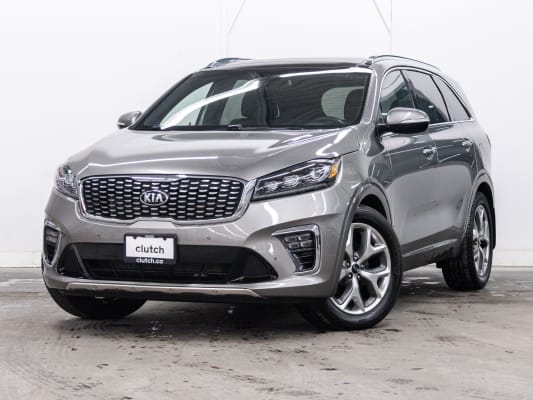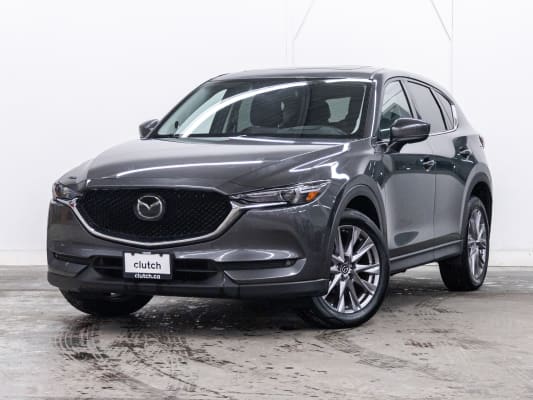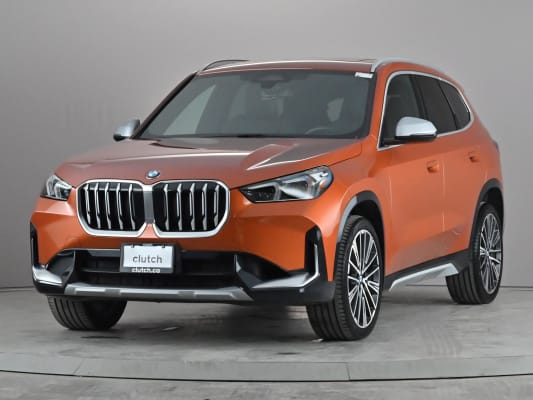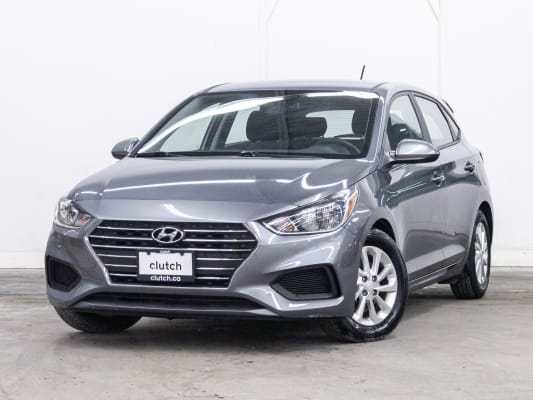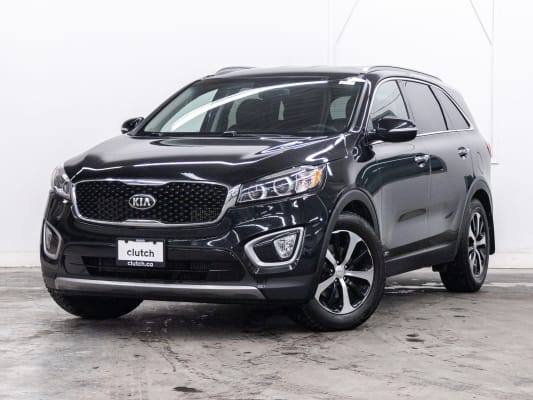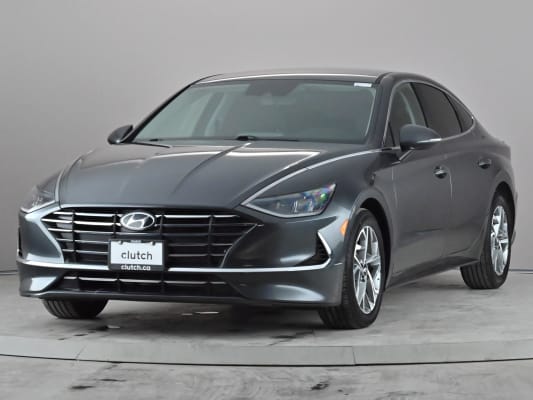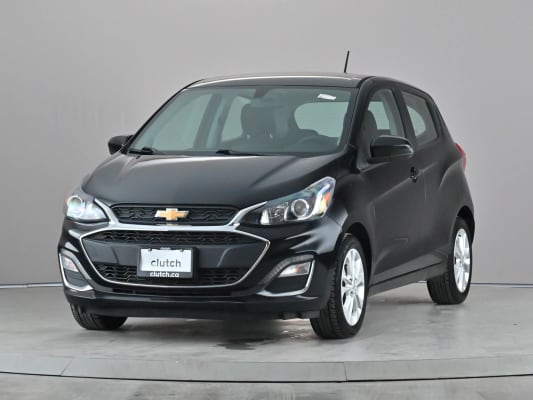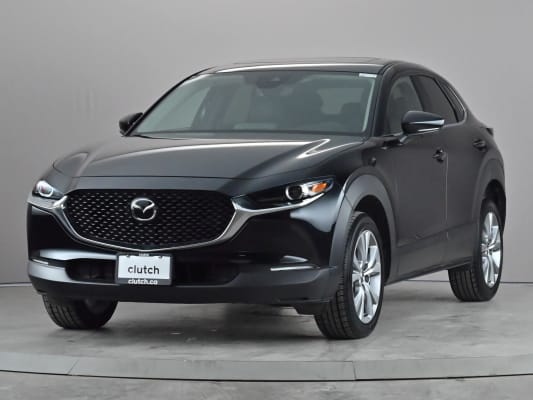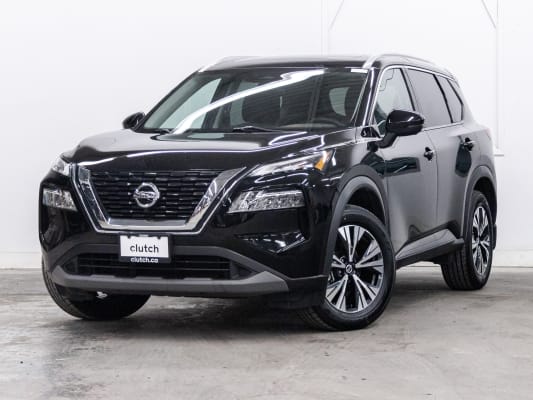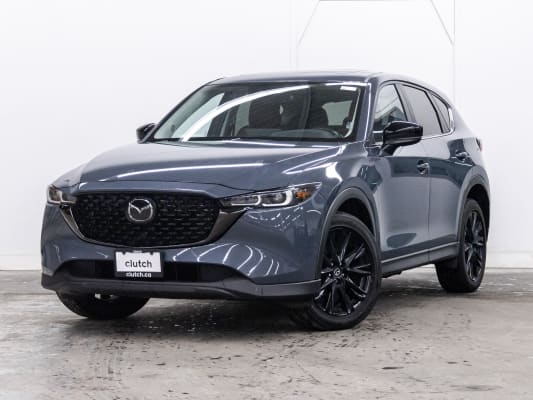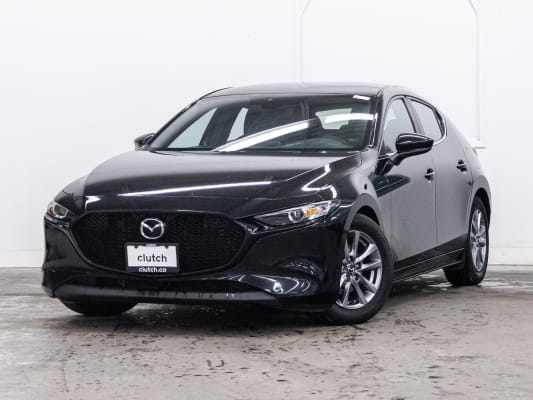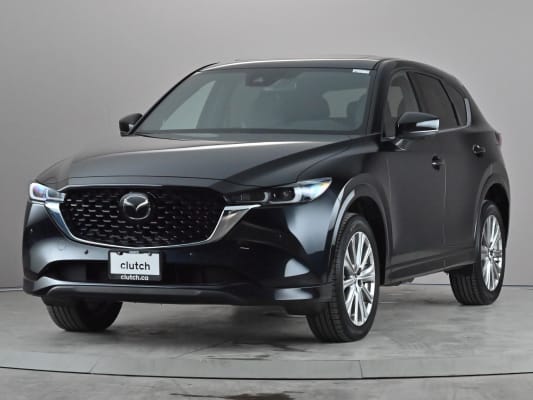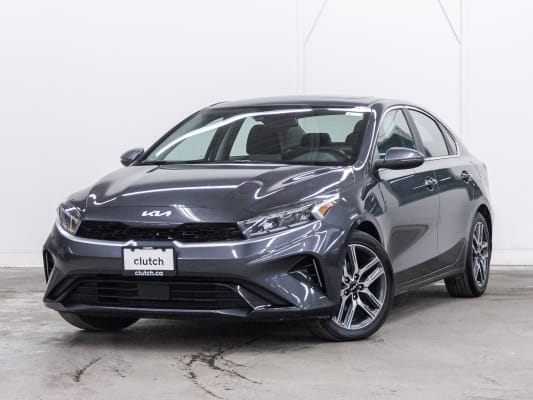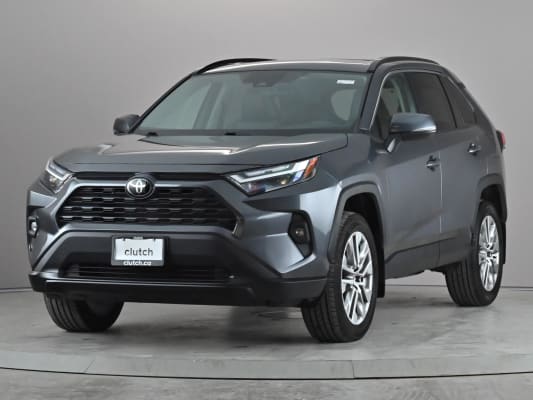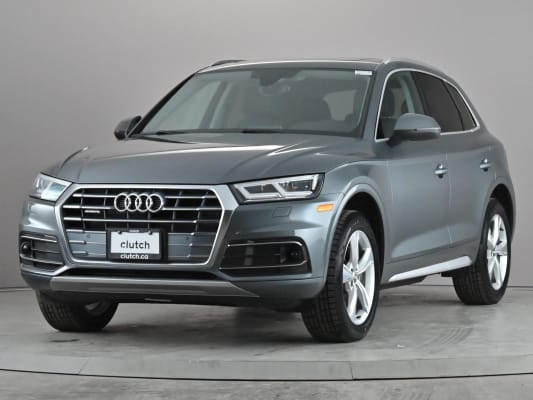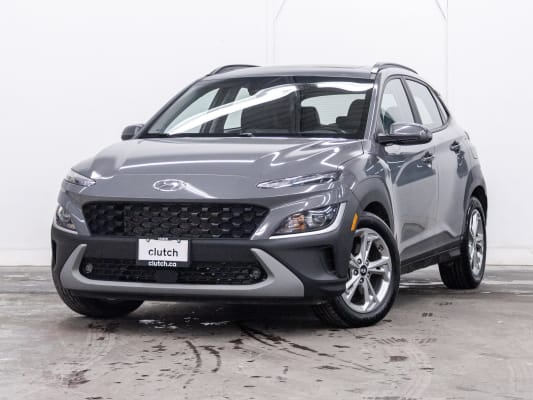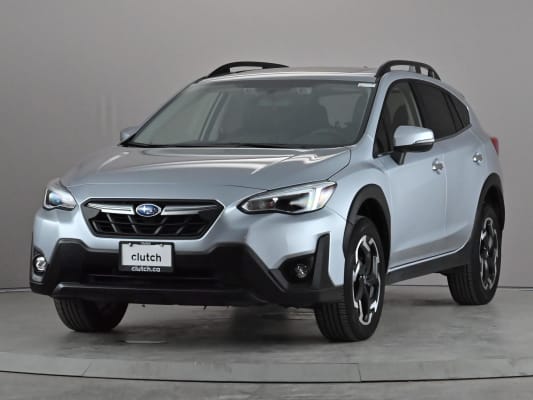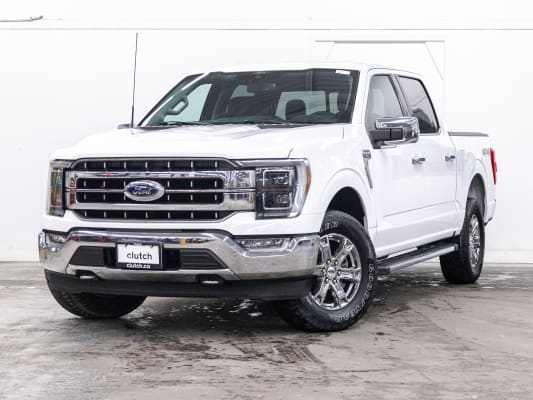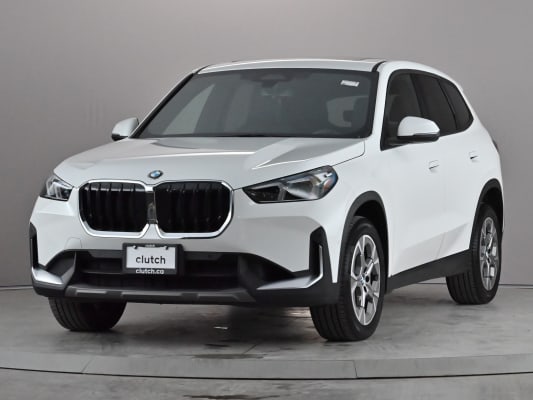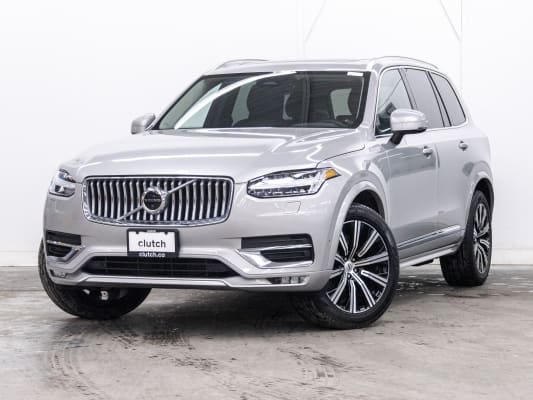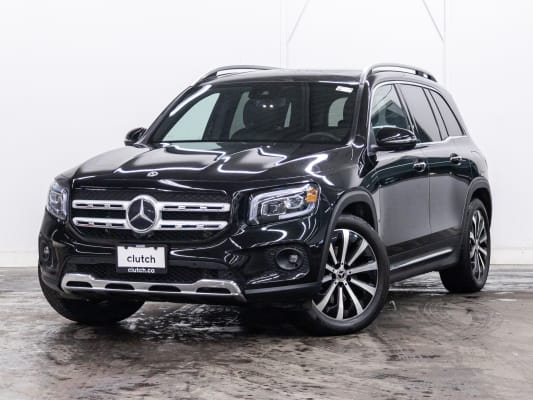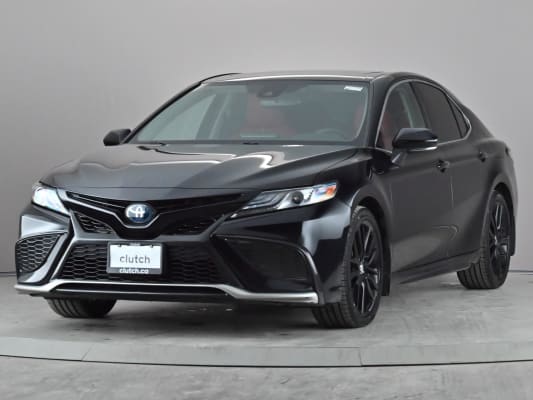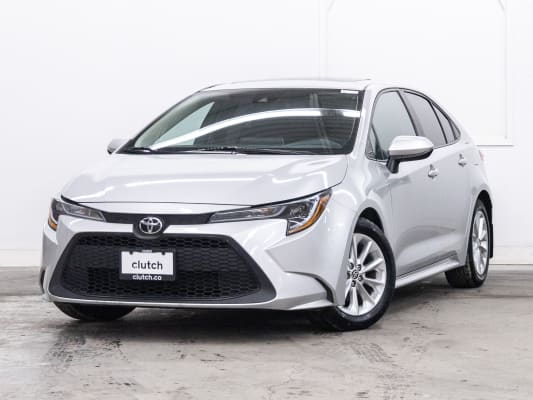If you’re shopping for a compact SUV in Canada, there’s a good chance your shortlist includes the Toyota RAV4 and Honda CR-V. These two vehicles dominate their segment — and the roads — thanks to their reputation for reliability, versatility, and value. Whether you're navigating icy backroads in Alberta or weaving through city traffic in Toronto, both the RAV4 and CR-V are built to handle everyday Canadian life.
But while they may look similar on paper, each SUV brings something different to the table — from fuel efficiency and all-wheel drive performance to cargo space, tech, and long-term ownership costs.
In this guide, we’ll compare used Toyota RAV4 and Honda CR-V models across the factors that matter most to Canadian buyers. If you're weighing your options between these two proven performers, this breakdown will help you find the right fit for your lifestyle and budget.
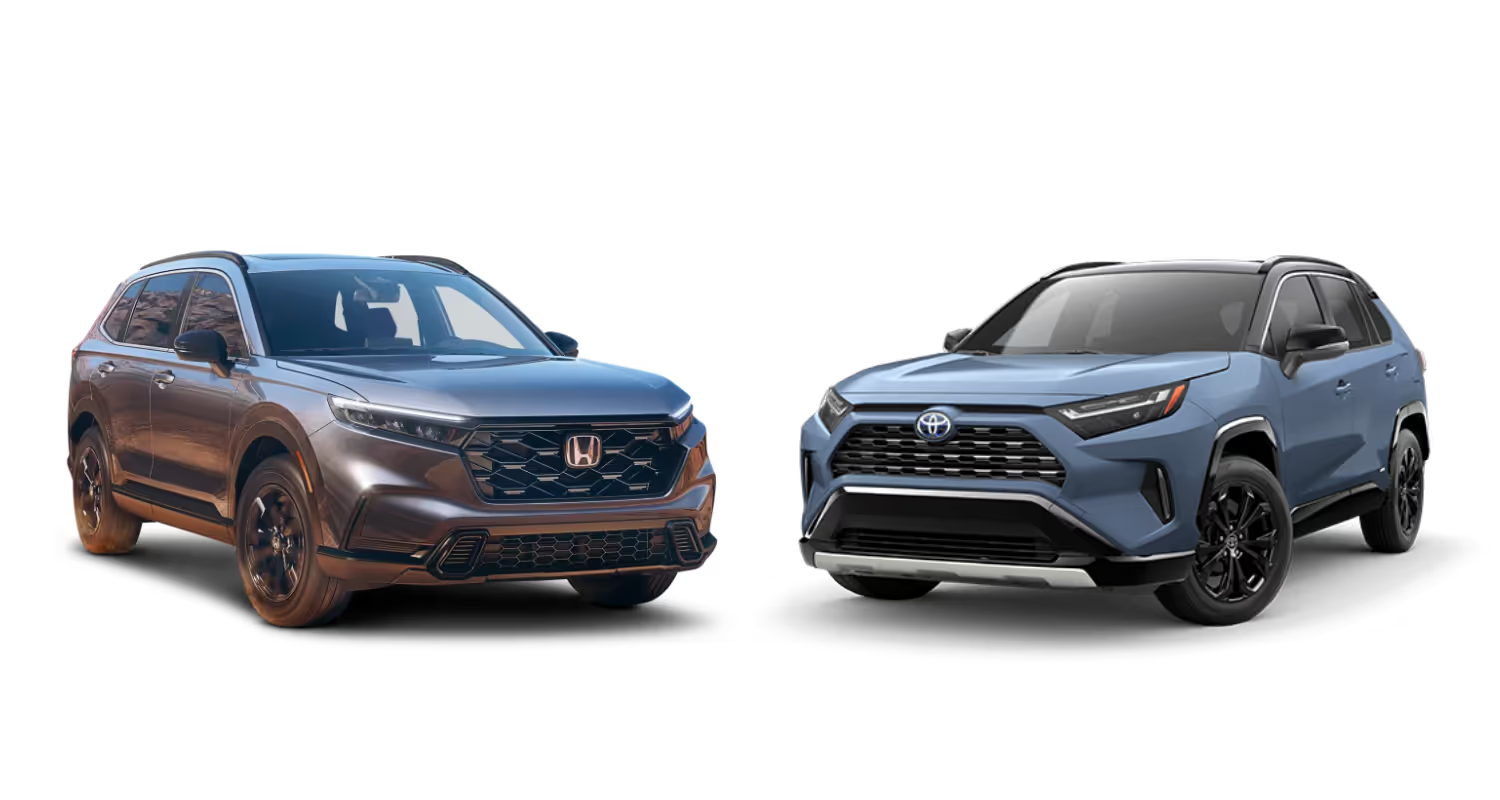
Used Price Range in Canada
When it comes to buying a used SUV, price can be the deciding factor — and both the Toyota RAV4 and Honda CR-V offer strong value in today’s pre-owned market. Whether you’re looking to keep your monthly payments low or stretch your budget for more features, here’s what you can expect to pay for models from 2020 to 2024.
Toyota RAV4
According to Clutch pricing models, used pricing for the RAV4 varies based on year, trim, and mileage — but here’s a typical range for the popular LE AWD trim:
- 2020 Toyota RAV4 LE AWD: From around $25,856 CAD
- 2024 Toyota RAV4 LE AWD: Up to $35,821 CAD
That puts the RAV4 firmly in the mid-$20K to mid-$30K range for late-model used examples, with higher trims like XLE, Trail, or Limited pushing into the low $40Ks. Hybrids and plug-in hybrids (like the RAV4 Prime) generally command a premium but offer lower fuel costs in return.
View more RAV4 pricing here: 2024 Toyota RAV4, 2023 Toyota RAV4, 2022 Toyota RAV4, 2021 Toyota RAV4, 2020 Toyota RAV4
Honda CR-V
The CR-V typically offers similar — sometimes slightly lower — pricing for comparable trims. Based on Clutch Car Value pricing:
- 2020 Honda CR-V LX AWD: From around $23,132 CAD
- 2024 Honda CR-V LX AWD: Up to $34,148 CAD
The CR-V’s base price advantage can be helpful for budget-conscious buyers, especially those seeking a well-maintained 2020 or 2021 model. Like the RAV4, higher trims (Sport, EX-L, Touring Hybrid) see prices climb closer to $45,000 for newer used examples.
View more CR-V pricing here: 2024 Honda CR-V, 2023 Honda CR-V, 2022 Honda CR-V, 2021 Honda CR-V, 2020 Honda CR-V
What It Means for Canadian Buyers
- The RAV4 tends to carry slightly higher resale values, especially for hybrid and Trail trims.
- The CR-V offers a more affordable entry point, especially for 2020–2022 models.
Either way, both vehicles offer excellent long-term value — especially when bought used through a certified seller like Clutch, where every SUV comes inspected, and priced competitively.
Performance
A compact SUV should do more than just get you from A to B — it should feel capable, confident, and composed on every type of road. Both the Toyota RAV4 and Honda CR-V are designed for real-world Canadian driving, but they approach performance in slightly different ways.

Toyota RAV4
Every gas-powered RAV4 from 2020 to 2025 comes with the same engine: a 2.5L four-cylinder paired with an 8-speed automatic transmission, delivering:
- 203 horsepower
- 184 lb-ft of torque
- Standard all-wheel drive (AWD) on most trims, including the popular LE AWD
The RAV4 isn’t built for speed thrills, but it’s responsive enough for highway merging and daily commuting. The 8-speed transmission provides smoother gear shifts than the CVT in the CR-V, especially under load or during uphill climbs.
On the road, the RAV4 feels solid and planted, with steering that’s more weighted than sporty. It shines on long highway drives or light off-pavement excursions, especially in the Trail trim, which features dynamic torque vectoring AWD, higher ground clearance, and a towing capacity of up to 3,500 lbs.
That’s a notable bonus for weekend warriors who tow bikes, small trailers, or campers.

Honda CR-V
The CR-V counters with a 1.5L turbocharged four-cylinder and a CVT (continuously variable transmission), standard across all trims from 2020 to 2025. It produces:
- 190 horsepower
- 179 lb-ft of torque
- Available AWD (standard on most Canadian trims)
On paper, the CR-V offers less power, but the turbo engine delivers peak torque early (from 1,700 rpm), which gives it a surprising kick in city driving and during quick lane changes. The CVT has been tuned to simulate gear shifts under hard acceleration, which helps it feel less “rubber-bandy” than older versions.
The CR-V is also well-mannered around town. The suspension is soft enough to absorb rough pavement but still responsive through corners, making it a comfortable and composed everyday driver.
Towing capacity sits at 1,500 lbs, which is fine for light-duty use but less than the RAV4’s Trail trim.
Driving Feel: Day-to-Day Use
- The RAV4 has a firmer, slightly more rugged feel — ideal for drivers who prioritize stability and occasional trail use.
- The CR-V is smoother and more refined in stop-and-go traffic, with better throttle response at lower speeds thanks to its turbocharged engine.
If you value towing capability and off-road confidence, the RAV4 gets the nod. But if you’re after a quiet, responsive SUV that feels at home in urban traffic or suburban errands, the CR-V delivers more finesse.
Comfort and Interior
Whether you’re running errands, heading out on a road trip, or chauffeuring kids to hockey practice, a comfortable, spacious cabin can make all the difference. The Toyota RAV4 and Honda CR-V both deliver when it comes to seating and practicality — but they take different approaches to interior design, materials, and overall feel.

Honda CR-V
If you’re looking for roominess, the CR-V is hard to beat. Its interior feels spacious and airy, with thoughtful ergonomics and excellent outward visibility. Across all trims from 2020 to 2025, the CR-V offers:
- Supportive seats with wide cushions and great adjustability
- Dual-zone climate control, heated front seats, and remote start standard on most trims
- Available leather-trimmed seating, heated rear seats, power driver’s seat, and heated steering wheel on EX-L and above
In terms of space:
- Front legroom: 1,049 mm
- Rear legroom: 1,042 mm
- Headroom is nearly identical in both rows at 970 mm
That nearly flat rear floor and generous legroom make the CR-V one of the most family-friendly options in the segment — perfect for taller passengers or bulky child seats.
Cargo space is another CR-V strength:
- 1,113 litres with seats up
- 2,166 litres with seats folded
Whether it’s ski gear or Costco runs, the CR-V swallows it all with ease. The only downside? The rear seats don’t fold completely flat, creating a slight step in the cargo floor.

Toyota RAV4
The RAV4’s cabin leans a little more rugged in its design, with chunkier knobs, bold textures, and a slightly more upright seating position. It’s well put together, and upper trims feel near-premium in finish — especially the Limited and Trail.
Standard interior highlights include:
- Heated front seats and fabric upholstery on the LE
- Power driver’s seat, heated steering wheel, and dual-zone climate control starting on XLE
- Ventilated front seats, faux-leather (SofTex) upholstery, and panoramic view monitor on higher trims
Interior dimensions are solid, though slightly behind the CR-V in rear passenger space:
- Front legroom: 1,039 mm
- Rear legroom: 960 mm
- Headroom: ~958–1,001 mm depending on sunroof configuration
Cargo space is ample:
- 1,059 litres with the seats up
- 1,977 litres with the seats folded
It’s still excellent — but just a touch less than what the CR-V offers.
Ride Quality and Everyday Use
- The CR-V is a standout for its quiet cabin, soft ride, and roomy back seat — ideal for families and long-haul commuters.
- The RAV4 feels more adventurous inside, with firm seats and a slightly higher driving position. It's well-suited for active lifestyles, though road noise is a bit more noticeable on older models.
Fuel Economy
With fuel prices in Canada bouncing up and down like a yo-yo, fuel efficiency is a top priority for SUV shoppers — especially those commuting long distances or driving in stop-and-go traffic. Both the RAV4 and CR-V are fuel-efficient SUVs with available hybrid options that can seriously cut costs at the pump.
Toyota RAV4
Even in its gas-only form, the RAV4 is one of the most efficient compact SUVs in Canada.
- Gas model (AWD):
- 9.5 L/100 km city
- 7.2 highway
- 8.5 combined
That’s a strong showing for an all-wheel drive SUV with a non-turbo engine — and with regular-grade fuel, it’s affordable to fill up across the country.
Looking for better mileage? Step into the RAV4 Hybrid, which is available from 2020 onward and shines with:
- 5.8–6.0 L/100 km combined, depending on model year
And if you're after the most fuel-efficient option, the RAV4 Prime plug-in hybrid offers:
- Up to 68 km of electric-only range
- 2.5 Le/100 km (gas + electric rating)
Honda CR-V
The gas-powered CR-V uses a 1.5L turbo engine that’s been tuned over the years to balance performance and efficiency.
- Gas model (AWD):
- 9.1 L/100 km city
- 7.6 highway
- 8.4 combined
That’s nearly identical to the RAV4, with slightly better highway numbers in real-world testing. The turbo engine also tends to do better in cold starts, which is worth noting for Canadian winters.
For top-tier efficiency, the CR-V Hybrid (available in Canada from 2023 onward) delivers:
- 6.4 L/100 km combined
- Best performance in urban driving, thanks to regenerative braking and electric-only low-speed travel
Unlike the RAV4, there’s no plug-in version of the CR-V — but its hybrid still delivers great real-world savings.
Fuel Efficiency Takeaways
- The RAV4 Hybrid is your go-to for best fuel economy — and the RAV4 Prime is among the best plug-in hybrids on the market.
- The CR-V hybrid is newer to the Canadian market but still a solid pick, especially for city dwellers who do lots of short trips.
- Gas models are neck-and-neck in combined numbers, so it comes down to which engine feel (turbo vs naturally aspirated) you prefer.

Reliability and Maintenance
One of the biggest reasons Canadian buyers stick with Toyota and Honda is peace of mind. Both brands have earned their reputations for reliability — and when it comes to the RAV4 and CR-V, you’re looking at two of the most dependable compact SUVs on the road.
Toyota RAV4
The RAV4 has a long track record of durability, with strong ratings across the board:
- J.D. Power Quality & Reliability Score (2022 model year): 81/100
- Consumer Reports gives the RAV4 a predicted reliability rating of 4/5, based on data from previous model years (2020–2022)
- RepairPal also ranks the RAV4 as above average in terms of repair frequency and cost
Most gas-only RAV4 models are low-maintenance, requiring standard oil changes, brakes, and filters. The RAV4 Hybrid and Prime have proven reliable as well, with Toyota’s hybrid tech already well-proven in models like the Prius.
Common ownership feedback points to:
- Long-lasting powertrains (well past 250,000 km with regular maintenance)
- Occasional infotainment quirks or minor interior rattles on older models
- Higher-than-average resale value, especially for hybrid trims
Honda CR-V
The CR-V is equally impressive when it comes to dependability:
- J.D. Power Quality & Reliability Score (2022 model year): 82/100
- Consumer Reports gives the CR-V a predicted reliability rating of 4/5, with high owner satisfaction
- Historically ranks among the top compact SUVs for low cost of ownership
CR-V owners consistently report:
- Strong performance from the 1.5L turbo engine, though early versions (2017–2018) had some oil dilution concerns — now resolved in newer models
- Low-cost routine service (oil, brakes, cabin filters) and widely available parts across Canada
- Newer hybrid trims (2023+) still relatively new, but early indicators suggest solid performance
Long-Term Ownership in Canada
- The RAV4 has slightly fewer reported mechanical issues, especially in older models
- The CR-V earns praise for build quality and intuitive maintenance — easy for DIYers or local mechanics
- Both are among the least likely SUVs to need major repairs before 150,000 km
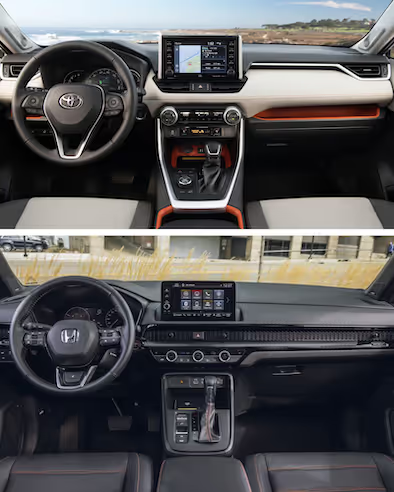
Features and Technology
Today’s SUVs are more than just people movers — they’re rolling tech hubs. From infotainment to driver assistance, both the Toyota RAV4 and Honda CR-V come loaded with features Canadians have come to expect. But depending on the model year and trim, one might suit your lifestyle better than the other.

Toyota RAV4
Toyota’s tech game stepped up significantly in recent years, and the RAV4 reflects that shift — especially from 2022 onward. Even the base LE trim comes well-equipped with:
- 8-inch touchscreen with Apple CarPlay & Android Auto
- Heated front seats (standard on all Canadian trims)
- Toyota Safety Sense 2.5: Includes adaptive cruise control, lane tracing assist, pedestrian/cyclist detection, emergency front braking, automatic high beams, and road sign assist
Move up to XLE or Limited trims and you’ll unlock more premium features like:
- Power liftgate and dual-zone climate control
- Heated rear seats, ventilated front seats, and faux-leather upholstery
- Wireless phone charging, 11-speaker JBL audio, and a larger 10.5-inch infotainment screen
- Optional digital rearview mirror and 360-degree camera system on Limited trims
Toyota also includes five USB ports in most models, making it family-friendly for devices on the go. The infotainment system supports over-the-air updates and comes with cloud-based navigation in newer models.

Honda CR-V
Honda’s approach leans more minimalist — but still highly functional. Across the 2020–2025 range, all trims include:
- 7-inch touchscreen with wired Apple CarPlay & Android Auto (upgradable to 9" on EX-L and Touring)
- Heated front seats, dual-zone automatic climate control, and remote starter
- Honda Sensing suite, with adaptive cruise control, lane keep assist, forward collision warning, and automatic emergency braking
Upper trims (Sport, EX-L, Touring Hybrid) include:
- Wireless smartphone integration (9-inch screen)
- Wireless phone charging
- 12-speaker Bose audio system (Touring Hybrid only)
- Navigation, Wi-Fi hotspot, and digital driver display
While the RAV4 tends to offer more features out of the gate, especially in its mid-trim levels, the CR-V’s user interface is intuitive, and its physical knobs and buttons are often appreciated for being distraction-free while driving.
Safety Tech Comparison
Both SUVs offer robust safety tech suites:
- RAV4’s Toyota Safety Sense gets points for earlier adoption of advanced features like intersection assist and rear cross-traffic braking
- CR-V’s Honda Sensing system is equally capable, with traffic jam assist and a more natural-feeling adaptive cruise experience (especially in 2023+ models)
Both vehicles earned top crash-test ratings, with the CR-V receiving an IIHS Top Safety Pick+ and the RAV4 earning a Top Safety Pick.
Ownership Costs
Beyond the sticker price, long-term ownership costs can make or break your SUV budget. From insurance premiums to depreciation and ongoing maintenance, both the Toyota RAV4 and Honda CR-V are known for affordability — but there are a few key differences Canadian shoppers should keep in mind.
Depreciation and Resale Value
Both vehicles hold their value exceptionally well, but the RAV4 tends to retain its resale value slightly better, especially in hybrid or Trail trims.
- According to Canadian Black Book and AutoTrader resale data:
- The Toyota RAV4 is consistently among the top 10 retained value vehicles in Canada
- The CR-V is not far behind, but slightly more prone to depreciation due to broader availability and more frequent fleet usage
- The Toyota RAV4 is consistently among the top 10 retained value vehicles in Canada
For buyers who plan to resell or trade in after 4–6 years, the RAV4 may offer stronger trade-in value — especially if you’ve maintained it well and kept mileage reasonable.
Insurance Costs
Insurance premiums in Canada vary by province, driving history, and trim level — but generally:
- The Honda CR-V has slightly lower average premiums, thanks to its lower replacement cost and more basic trims
- The RAV4, especially in hybrid or Prime configurations, may cost more to insure — but the difference is usually modest (around $100–$200 per year, depending on region)
Both vehicles are highly rated for safety, which helps keep premiums competitive in the compact SUV segment.
Maintenance and Repairs
Both the RAV4 and CR-V have earned reputations for long-term durability and low-cost maintenance:
- Toyota RAV4
- Routine service is straightforward and affordable at most Canadian dealerships
- Hybrid versions may have higher upfront service costs (e.g., battery cooling system checks), but overall ownership costs remain low
- Honda CR-V
- Very simple to maintain, with widely available parts and lots of independent garage support
- The turbo engine is fuel-efficient and durable, though some 2017–2018 models had oil dilution issues (mostly resolved in 2020+ versions)
Neither model requires premium fuel, and both run reliably on regular 87-octane gas.
Bottom Line:
- The CR-V is slightly cheaper to insure and easier to service at non-dealer garages
- The RAV4 edges ahead in resale value, particularly for hybrid trims
- Overall, both are among the most affordable compact SUVs to own long-term in Canada
Verdict: Which One Is Right for You?
When it comes to choosing between the Toyota RAV4 and Honda CR-V, there’s no wrong decision — just the right fit for your lifestyle. Both of these compact SUVs are among the most trusted, practical, and efficient vehicles on Canadian roads. But depending on your priorities, one might edge out the other.

Choose the Toyota RAV4 if you want:
- A slightly more rugged, adventurous feel
- More towing capacity (especially in the Trail trim)
- Better resale value and broader hybrid availability
- A bit more tech at the mid-trim level
The RAV4 is ideal for drivers who value durability, outdoor versatility, and long-term savings — especially if you're eyeing a hybrid or plan to tow a small trailer.

Choose the Honda CR-V if you want:
- A smoother, quieter ride with refined turbo power
- More rear passenger and cargo space
- Slightly lower insurance and maintenance costs
- A smart, minimalist cabin with excellent comfort
The CR-V is perfect for commuters, growing families, and anyone who prioritizes comfort, space, and reliability in everyday driving.
{{inlinecta2}}
Still deciding?
You can’t go wrong with either — and buying a quality used RAV4 or CR-V from Clutch makes it even easier. Every vehicle comes fully inspected, backed by a 3-month warranty, and includes a 10-day test-own period so you can make sure it’s the right fit. Plus, the entire process is 100% online.







_Thumbnail.avif)



